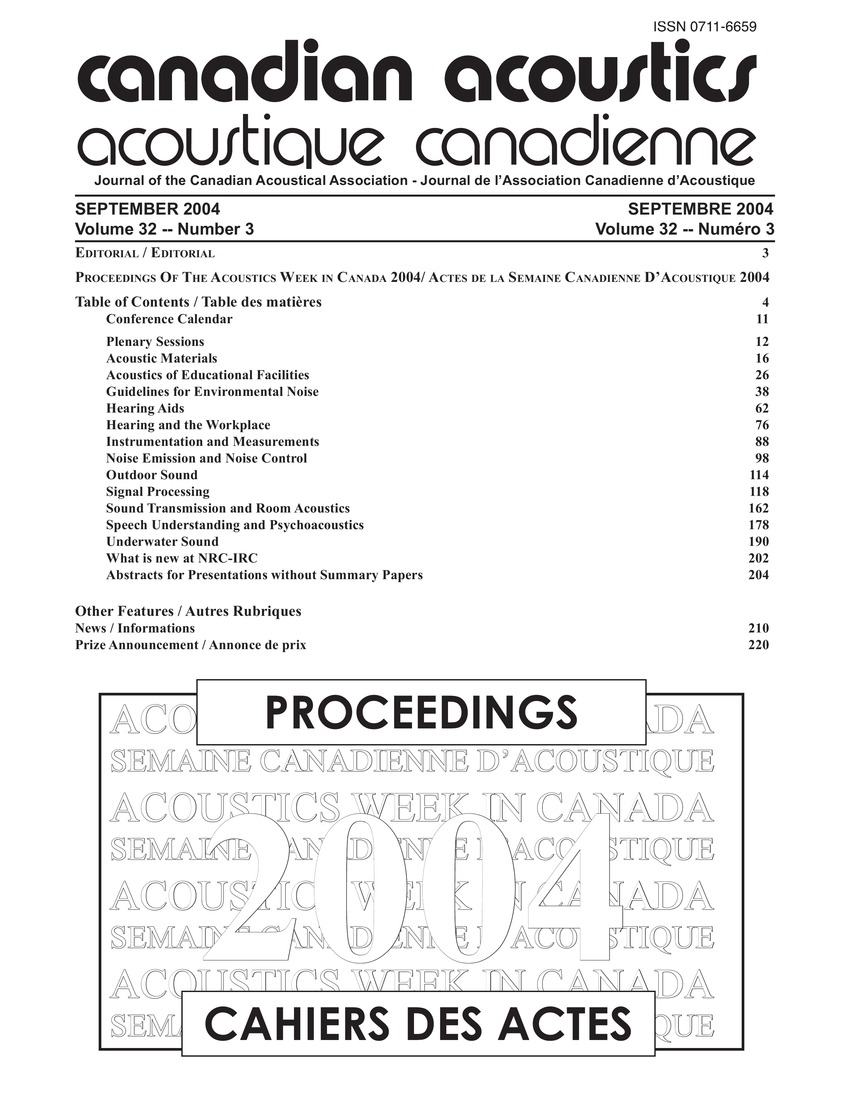Multiband compression and contrast-enhancing frequency shaping in hearing aids
Keywords:
Algorithms, Amplification, Bandwidth, Computational complexity, Speech processing, Synchronization, Tuning, Contrast-enhancement frequency shaping (CEFS), Filterbank implementation, Formant-tracking, Multiband compressionAbstract
A hearing-aid amplification scheme that uses a formant-tracking algorithm and time-varying filter to produce improved contrast enhancement between formants is presented. The combination of contrast-enhancing frequency shaping (CEFS) amplification and multiband compression in a single frequency-domain filterbank implementation is also studied. CEFS compensates for the broadened tuning curves and elevated thresholds of an impaired ear by adjusting the relative amplitudes of the formats without distorting the spectral envelope between the formats. The new multiband-CEFS (M-CEFS) algorithm utilizes a formant tracker to direct the gain-frequency response of a time-varying filter.Additional Files
Published
How to Cite
Issue
Section
License
Author Licensing Addendum
This Licensing Addendum ("Addendum") is entered into between the undersigned Author(s) and Canadian Acoustics journal published by the Canadian Acoustical Association (hereinafter referred to as the "Publisher"). The Author(s) and the Publisher agree as follows:
-
Retained Rights: The Author(s) retain(s) the following rights:
- The right to reproduce, distribute, and publicly display the Work on the Author's personal website or the website of the Author's institution.
- The right to use the Work in the Author's teaching activities and presentations.
- The right to include the Work in a compilation for the Author's personal use, not for sale.
-
Grant of License: The Author(s) grant(s) to the Publisher a worldwide exclusive license to publish, reproduce, distribute, and display the Work in Canadian Acoustics and any other formats and media deemed appropriate by the Publisher.
-
Attribution: The Publisher agrees to include proper attribution to the Author(s) in all publications and reproductions of the Work.
-
No Conflict: This Addendum is intended to be in harmony with, and not in conflict with, the terms and conditions of the original agreement entered into between the Author(s) and the Publisher.
-
Copyright Clause: Copyright on articles is held by the Author(s). The corresponding Author has the right to grant on behalf of all Authors and does grant on behalf of all Authors, a worldwide exclusive license to the Publisher and its licensees in perpetuity, in all forms, formats, and media (whether known now or created in the future), including but not limited to the rights to publish, reproduce, distribute, display, store, translate, create adaptations, reprints, include within collections, and create summaries, extracts, and/or abstracts of the Contribution.


